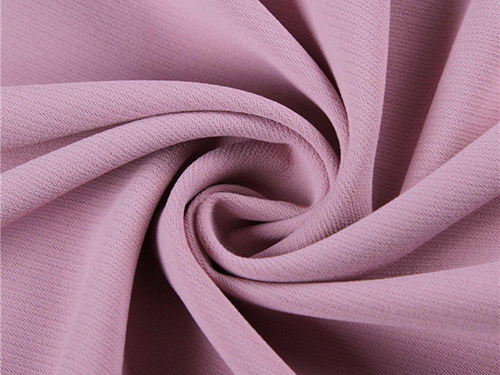
To dye fabrics with a deep color, Guangdong Tiansheng New Materials has five suggestions, namely: alkali reduction treatment for polyester fabrics, strengthening impurity and stain removal treatment for dyed fabrics, ultrasonic technology treatment, mercerization treatment for cotton fabrics, and the application of low-temperature plasma technology. By applying these five methods well, the fabric can be dyed dark.
1、 Alkali reduction treatment of polyester fabric
Polyester macromolecules have high crystallinity, compact fiber structure, high refractive index and surface reflectance, smooth fiber surface, and are mainly reflected by mirror light. After dyeing black with disperse dyes, a large amount of reflected light enters people's sight as white light from the fabric surface, making it difficult to obtain dark black color. After alkali reduction treatment, the original smooth surface of polyester is transformed into a rough surface, forming a concave and convex irregular reflection layer, which is commonly known as etching effect, resulting in a certain dark color effect. Moreover, after reduction treatment, the activity of the fabric increases and the adhesion of the dye increases.
2、 Strengthen the removal of impurities and pollutants from contaminated materials
Adequate pre-treatment, good wettability of the fabric, and large capillary effect may increase the diffusion ability of dye molecules to the fabric, thereby improving the dye uptake rate. Therefore, strengthening the removal of impurities and pollutants from contaminated materials can achieve the above goals. So choosing the soap detergent from Dongguan Tiansheng Chemical is also a good choice. The soap detergent not only has strong anti floating ability but also can make semi solid and unstable dyes firm, playing a role in replacing or partially replacing fixing agents.
3、 Ultrasonic technology processing
Ultrasound is a vibration wave that cannot be perceived by the human ear. Sound waves with normal frequencies ranging from 104 to 109Hz are called ultrasound, while those with frequencies greater than 109Hz are called special ultrasound or microwave ultrasound. After being treated with ultrasonic technology before dyeing, the degree of fiber concentration is somewhat loose, which increases the specific surface area inside the fibers, thereby increasing the adsorption capacity of the fibers to dyes, improving the dyeing rate of the fabric, and achieving a medium dark color effect. After research, this technology has shown significant effects on wool fibers with scales and linen fabrics with tight surface structures.
4、 Mercerizing treatment of cotton fabrics
The cotton fabric treated with mercerization has significantly improved its ability to adsorb dyes, achieving a medium to dark color effect and improving surface gloss compared to cotton fabric not treated with mercerization.
5、 Application of low-temperature plasma technology
Plasma technology is a method of treating the surface of fabrics, which belongs to the modern dyeing technology of dry cleaning and physical processing. For example, after plasma treated polyester fibers are grafted and polymerized, a low refractive index film is formed on the fiber surface, which can significantly improve the dye uptake and color depth; For example, for linen fabrics that are difficult to dye, after plasma treatment, the capillary effect of the fabric is 1 to 1 or 5 times that of the untreated fabric, and the adsorption capacity of the dye is greatly increased, making it easy to dye deep and strong colors, and the dark color effect is obvious.
About
Brief introduction Application Certificate Laboratory Connectproduct
Post finishing agent Enzymatic water Brightener Printing/Coating Additives MoreNews
Dynamic Lnformation Common
Mobile website

TRL:+86 0769-88124837
Chinese mailbox:dgtshdrl@163.com
English mailbox:postmaster@tianshengchem.com
Guangdong Tiansheng Environmental Protection New Material Technology Co., Ltd. Copyright © 2023 all rights reserved